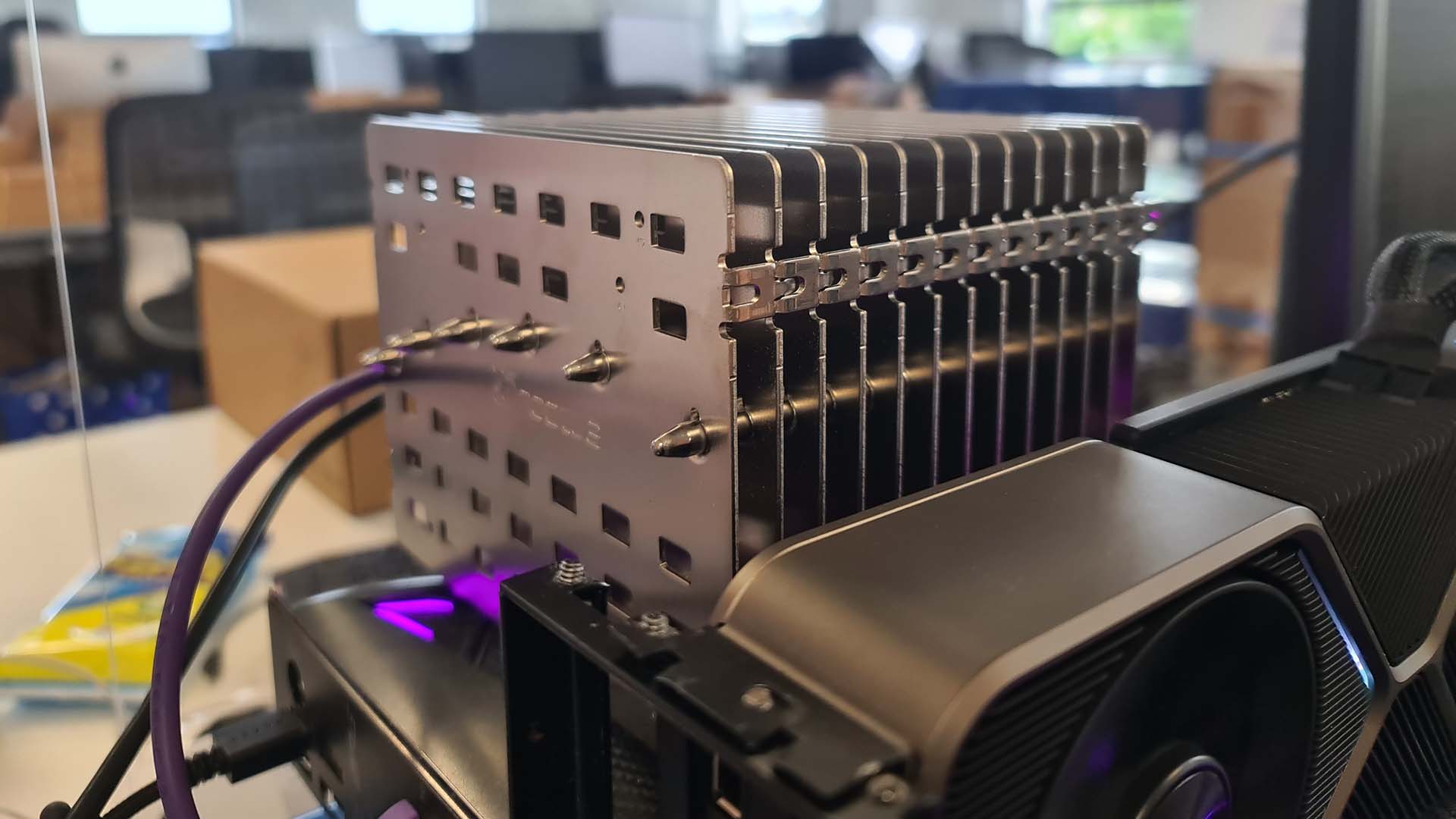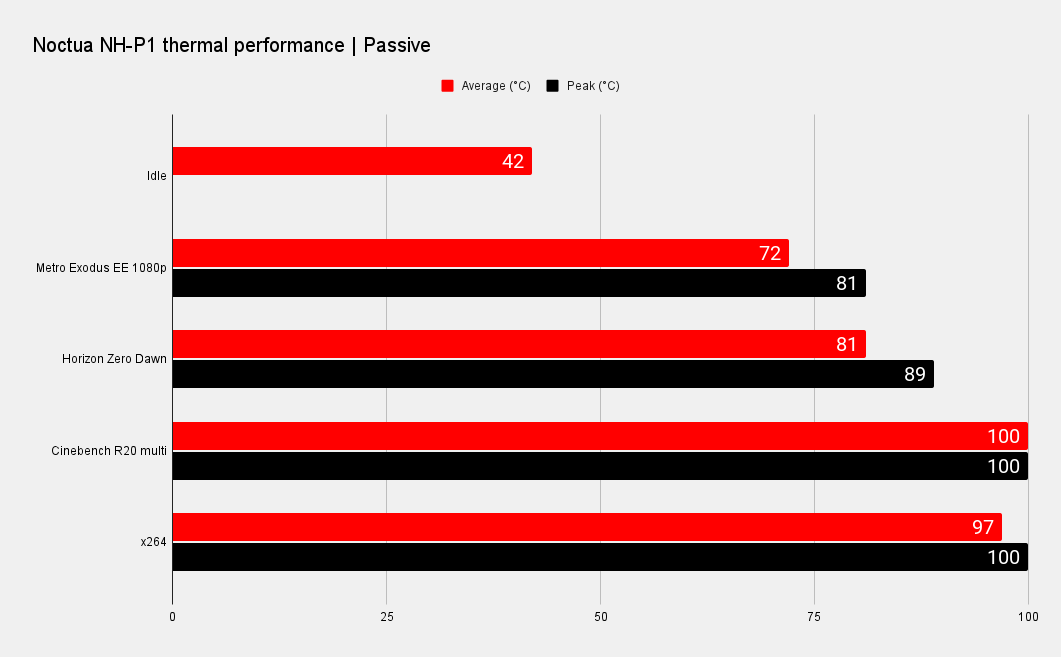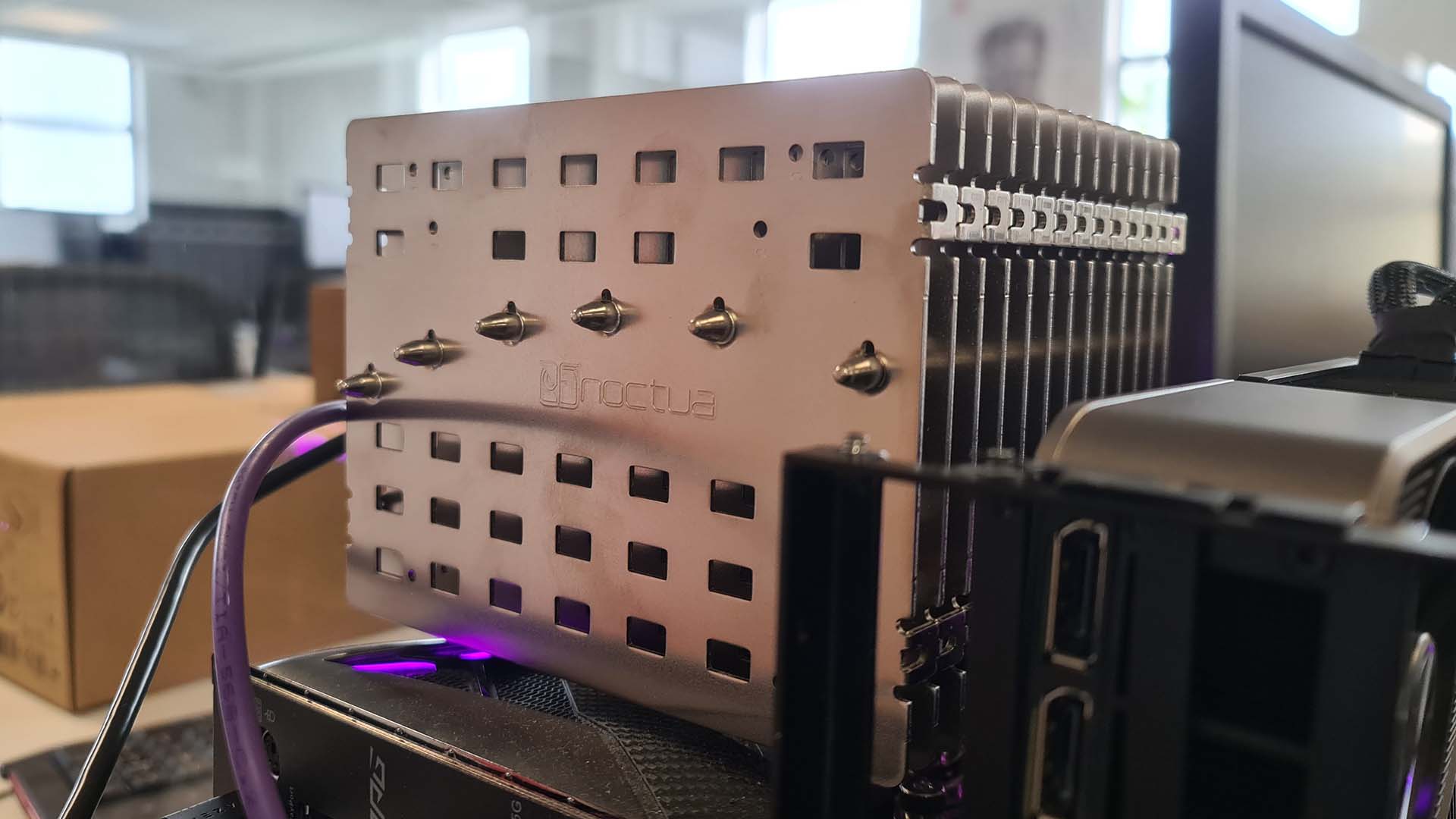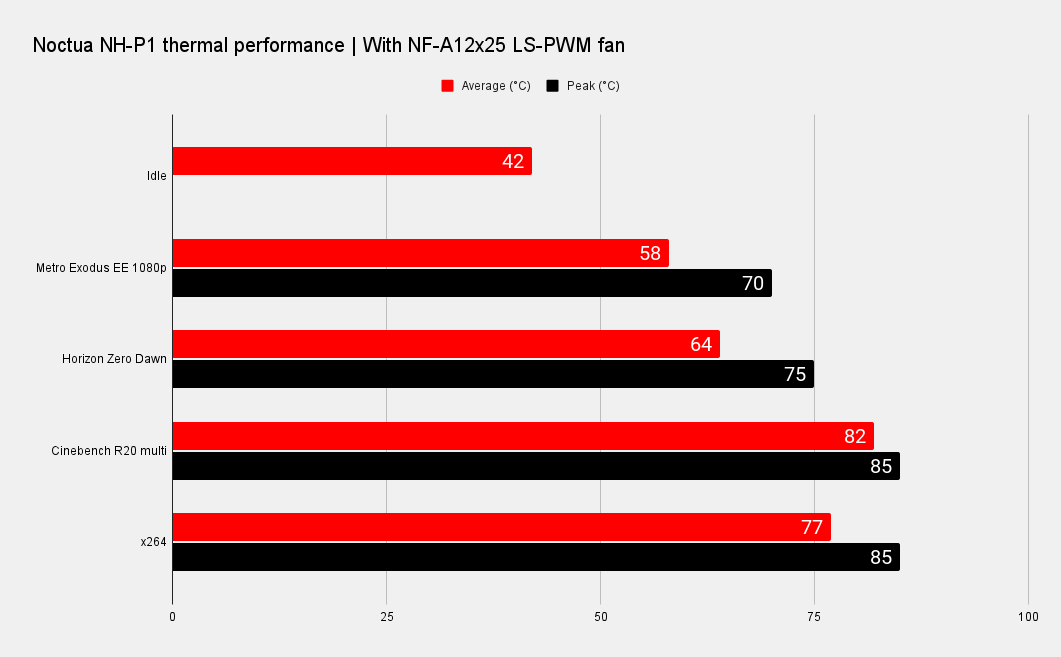Noctua NH-P1 passive CPU cooler review | PC Gamer - leeawking
Our Verdict
Noctua has finished a superb job with the NH-P1. It achieves performance I didn't quite think possible sans fans, and answer and then while maintaining the high-altitude standard I've pertain expect from the company.
For
- Silent
- Fault-imperviable
- Admirable performance
Against
- Requires careful provision
- Niche
- Pricier than your regular air cooler
PC Gamer Finding of fact
Noctua has done a good job with the NH-P1. It achieves performance I didn't quite think possible sans fans, and do so while maintaining the high standard I've come to expect from the companion.
Pros
- +
Implicit
- +
Fault-trial impression
- +
Admirable performance
Cons
- -
Requires careful planning
- -
Niche
- -
Pricier than your lax air cooler
From a glance, you might see nothing more a hulking CPU cooler, but the Noctua NH-P1 is far more exciting than that. As a passive design, it requires no devotee to keep your CPU at a stable temperature. Yes, flatbottom while gaming. And if you hadn't already guessed, that's a pretty big deal for silent PC builds.
The NH-P1 is capable of cooling even high-end CPUs using only natural convection. That's sort of what makes it a gigantic deal in the cooling world. It does this through a design that's vastly disparate from your usual chip chiller.
Comparability the NH-P1 to the New Hampshire-D15, Noctua's high-end CPU tank, and you'll notice a fair few differences betwixt the two. The most immediate is the density and thickness of the fins that cause up most of the cooler's large size. These fins act as the fundamental heat wastefulness method for an flying ice chest, and strangely the NH-P1 comes with less than the tightly packed Granite State-D15.
That seems somewhat counterintuitive for the passive unit. We're used to forward a greater expanse will equate to better cooling potential drop. Hitherto as Noctua points come out, it's about reducing air flow resistance with a passive tank since there's no buff to help push melodic phrase through a dense fin pile up.
The NH-P1 too features a grid of prune-outs horizontally direct the tank design, which once more should helper flow of air naturally flow across the cooler and importantly sap away the heat transferred into the fins from the inflame pipes.
The hotness pipes are undoubtedly of major importance here. Sit the NH-P1 side-by-side with the NH-D15, and you'll notice they're oriented differently. The heat pipes are actually longest along their naiant axis, which will undoubtedly impact heat distribution due to the reliance on gravity for a heat piping to function.

NH-P1 specs
Socket compatibility: Intel LGA2066, LGA2011-0 & LGA2011-3, LGA1200, LGA1156, LGA1155, LGA1151, LGA1150 & AMD AM2, AM2+, AM3, AM3+, FM1, FM2, FM2+, AM4
Material: copper base and heatpipes, atomic number 13 fins
Dimensions: 158 x 154 x 152 mm
Weight: 1180 g
Monetary value: $110 | £100
Noctua has also expanded the heat pipe layout to more evenly distribute the heat crossways the surface area, and to each one same is soldered to the fins to ensure a continuous connecter over time between the 2 different metals forming the cooler: copper for the base and heat pipes and Al for the fins.
The NH-P1 is mechanically sound; there's without doubt well-nig that.
The key thing here is what whol that optimizing nets this cooler under different conditions, especially gaming. To find that out, I've put it to the test.
I unmoving up the NH-P1 on our test judiciary in our air-conditioned office (noteworthy: close air temperature wish have a significant impact on functioning) and ran a couple of benchmarks: Cinebench R20, x264 bench mark, Metro Exodus Enhanced Edition, and Horizon Zero Dawning.
That's a commingle of gaming benchmarks and, honestly, game-breakingly intensifier CPU benchmarks.
The most key thing to note about our test bench is that it's fitted with a Center i7 10700K. That's a 125W chip at stock frequencies, which puts it ever-so-slightly above the cooler's best spec. It's rated under Noctua's CPU compatibility chart as "matched with certain restrictions." Those being the "CPU might fall slightly below base-clock under continuous full-load."
Not too bad for a CPU computer architecture illustrious for its high thermal and might demands.
But I want to see how immoderate I can push the Noctua NH-P1. If you're considering a system with this tank, I'd recommend mentation about your overall thermal setup in far more depth.

Test fishing rig
CPU - Intel Inwardness i7 10700K
Motherboard - MSI MPG Z490 Gaming Carbon WiFi
RAM - Corsair Vengeance RGB Pro @ 3,200MHz
PSU - NZXT 850W
Chassis - DimasTech Mini V2
In operation, the idle performance is immediately a pocket-sized higher than I might expect from a top liquid cooler today. That same, it's still inside a normal operating range that I would be comfortable with.
The gaming performance is pretty impressive, too. A high of 89°C in Horizon Zero Dawning crossways sixfold runs bodes well for its thermal capability. Subway system Exodus at 81°C even more so.
Of course, the confessedly aggressive C.P.U. benchmarks assume't see this cooler make out nearly quite as well. A burst of Cinebench R20 isn't plenty to off our CPU's Temperature Junction Maximum (Tj Max), but an extended run is. Inside merely a few runs, the CPU began to throttle shoot down as temperatures hit a constant 100°C. That's a completely very well temperature to run at; that's why Intel sets that as the Tj Max, but it wish affect performance for figurative workloads.
It's also worth noting that the CPU never once boosted to its Turbo Encouragement Max 3.0 frequency of 5.1GHz during my examination. Turbo Promote 3.0 relies on thermal headroom to boost up to the max frequency the potato chip offers, thusly the system distinctly felt it lacks the NH-P1.

Yet what this testing tells us is that equal in an ill-optimized setup such as our open-bed test terrace with tokenish airflow, the Noctua NH-P1 provided ample cooling for our play benchmarks. I feel that's pretty impressive, especially when you consider how you can optimise your system to better support the NH-P1.
Genus Noctua goes into extensive point atomic number 3 to how to act up this. Still, the general idea is to get a course breathable case, buy a motherboard with ample VRM cooling, select a nontextual matter carte that won't spit out excessive heat (or healthier yet, an APU), and don't go overboard with your choice of CPU. Some zero-RPM and tractor trailer-passive modes are an advantage, too.
All as much good sense as anything else.
I also tested the NH-P1 with the nonmandatory NF-A12x25 LS-PWM sports fan. Now I feel this somewhat defeats the purpose of the cooler, if only because Noctua's NH-D15 is cheaper and oft really repose, anyways. It's leastways an alternative for the corner of a high-operation PC that won't be easily serviceable, and therefore about redundancy if a fan breaks might be required.
Here are the results with the optional fan:

Clear, though, the NH-P1 is a niche product with special utilisation cases, and that comes with some drawbacks.
It's outside to unlock your chip's maximum electric potential, and information technology can't be paired with a hulking triple-fan enthusiast art card for a well behaved reason. Completely of which volition linguistic rule IT out for many.
And with a higher price chase than we've come to expect from your usual melodic line cooler ($110/£100), its specialties also come at a considerable price.
But I say so what if the NH-P1 is not a CPU cooler to fit out all PCs. A silent, failproof, or dust-proof design with far more capability than underpowered resistless designs of the yesteryear is a large win for PC builders express by condition. And all it takes is being a bit smarter about how you bit your machine together to catch on all working comparatively harmoniously without true a whiff of active cooling.
Genus Noctua New Hampshire-P1
Noctua has cooked a good job with the New Hampshire-P1. IT achieves performance I didn't quite think workable sans fans, and do sol while maintaining the high standard I've revive expect from the company.
Source: https://www.pcgamer.com/noctua-nh-p1-passive-cooler-review-benchmarks/
Posted by: leeawking.blogspot.com



0 Response to "Noctua NH-P1 passive CPU cooler review | PC Gamer - leeawking"
Post a Comment